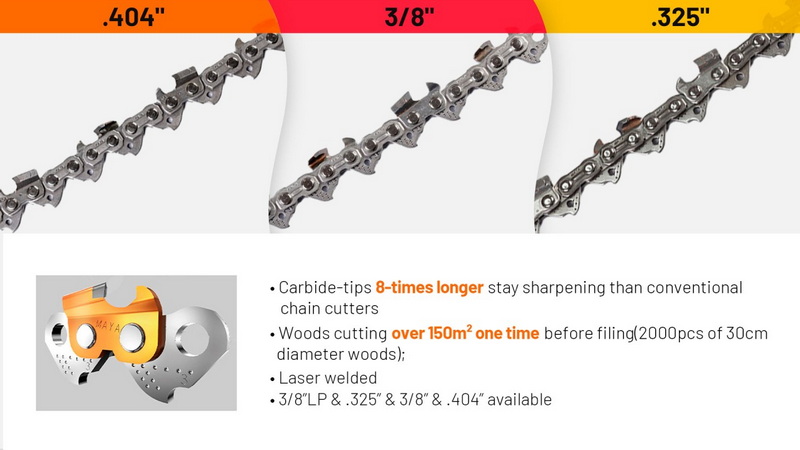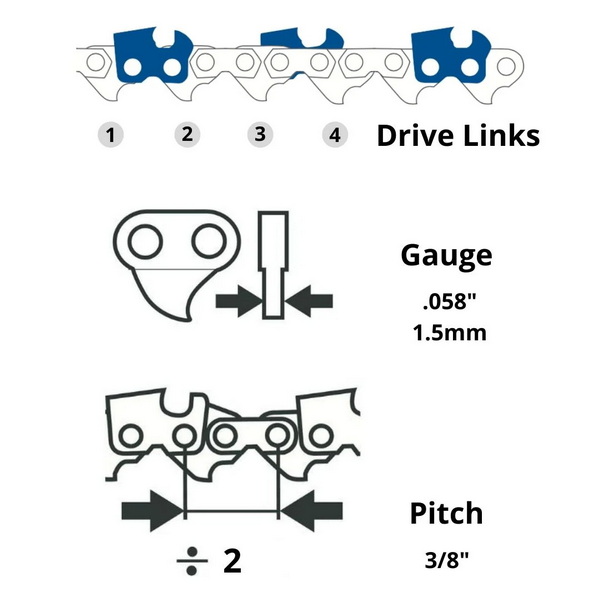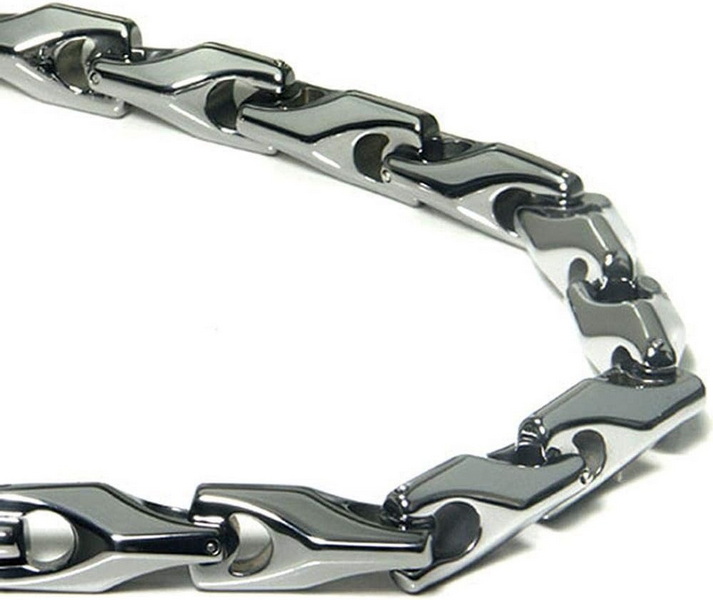Content Menu
● Understanding Tungsten Carbide
>> Synthesis and Composition
>> Physical Properties
● Forms and Structures of Tungsten Carbide
● Applications of Tungsten Carbide
● Can Bolt Cutters Cut a Tungsten Carbide Chain?
>> Limitations of Bolt Cutters
>> Alternative Methods for Cutting Tungsten Carbide
● Cemented Tungsten Carbide
● Practical Considerations
● Conclusion
● Frequently Asked Questions (FAQ)
>> 1. What makes tungsten carbide so hard?
>> 2. Can tungsten carbide jewelry be cut off in an emergency?
>> 3. What are the main advantages of using tungsten carbide in cutting tools?
>> 4. How does the addition of cobalt affect the properties of tungsten carbide?
>> 5. What is the difference between tungsten carbide and tungsten semicarbide?
● Citations:
Tungsten carbide is renowned for its exceptional hardness, wear resistance, and thermal properties, making it a crucial material in various industrial applications[3]. This compound, formed by fusing tungsten and carbon atoms, is frequently used in coatings to protect critical components in demanding environments[3]. Given its robust nature, a common question arises: Can bolt cutters effectively cut through a tungsten carbide chain? This article delves into the properties of tungsten carbide, its applications, and the feasibility of cutting it with bolt cutters.

Understanding Tungsten Carbide
Tungsten carbide (WC) is a chemical compound comprising tungsten and carbon atoms arranged in a hexagonal crystal structure[3]. Typically, industrial-grade tungsten carbide consists of approximately 94% tungsten and 6% carbon by weight[3]. To enhance specific properties, binding materials like cobalt or nickel are often added, creating a cermet—a composite of ceramic and metallic components[3]. This combination provides the high hardness of ceramic tungsten carbide with the toughness of metallic binders, making it indispensable in industries ranging from aerospace to oil drilling[3].
Synthesis and Composition
Tungsten carbide powder is synthesized through the reaction of tungsten metal or powder with carbon at temperatures between 1,400 and 2,000 °C[1]. Alternative methods involve lower temperature fluid bed processes reacting tungsten metal or tungsten trioxide (WO3) with a CO/CO2 gas mixture and hydrogen gas between 900 and 1,200 °C[1].
The chemical composition is meticulously engineered to achieve specific particle size distributions and morphologies, which directly influence the final coating performance[3]. The manufacturing process carefully controls these characteristics to ensure consistent coating quality[3].
Physical Properties
Tungsten carbide boasts impressive physical properties that make it suitable for demanding industrial applications:
- Hardness: Tungsten carbide ranks just below diamond in hardness among common industrial materials[3]. It registers between 9.0 and 9.5 on the Mohs scale, with a Vickers hardness of approximately 2600[1][5].
- Density: Its high density provides stability and wear resistance in high-impact environments[3]. Tungsten carbide has a density of 15.6 g/cm³[1].
- Melting and Boiling Points: The material maintains its structural integrity from room temperature to extreme heat, featuring a high melting point of 2,870 °C (5,200 °F) and a boiling point of 6,000 °C (10,830 °F)[1][5].
- Thermal Properties: The thermal conductivity of tungsten carbide is 110 W/m·K, and its coefficient of thermal expansion is 5.5 μm/m·K[1][5].
Mechanical Properties:
- Young's modulus: Approximately 530–700 GPa[1][5].
- Bulk modulus: 379–381 GPa[1].
- Shear modulus: 274 GPa[1][5].
- Ultimate tensile strength: 344 MPa[1][5].
- Ultimate compressive strength: About 2.7 GPa[1][5].
- Poisson's ratio: 0.31[1][5].
- Electrical Properties: Tungsten carbide has a low electrical resistivity of about 0.2 μΩ·m, comparable to some metals like vanadium[1][5].
These properties collectively ensure that tungsten carbide is invaluable in applications requiring dimensional stability and thermal resistance[3].
Forms and Structures of Tungsten Carbide
Tungsten carbide exists in two primary forms:
1. Hexagonal Form (α-WC): This is the most common form, characterized by a hexagonal structure (hP2, space group P6m2, No. 187)[1][5]. The structure comprises a simple hexagonal lattice of metal atoms arranged in layers, with carbon atoms filling half the interstices, providing both tungsten and carbon with regular trigonal prismatic coordination[1][5].
2. Cubic High-Temperature Form (β-WC): This form has a rock salt structure and is stable at high temperatures[1][5].
The bond lengths within the hexagonal structure are precisely defined:
- Distance between tungsten atoms in a hexagonally packed layer: 291 pm[1][5].
- Shortest distance between tungsten atoms in adjoining layers: 284 pm[1][5].
- Tungsten-carbon bond length: 220 pm[1][5].
These structural characteristics contribute to the exceptional hardness and stability of tungsten carbide[3].
Applications of Tungsten Carbide
Tungsten carbide's unique properties make it suitable for a wide array of applications across various industries[3]:
- Cutting Tools: Tungsten carbide is extensively used in cutting tools for machining, including drill bits, milling cutters, and lathe tools[1]. Its hardness allows these tools to operate at higher cutting speeds than high-speed steel tools[1].
- Abrasives: Due to its hardness, tungsten carbide is used as an abrasive material in grinding wheels and polishing compounds[1].
- Wear-Resistant Coatings: Applied as a coating, tungsten carbide protects components from wear and abrasion in harsh environments[3]. This is particularly useful in aerospace turbines and oil drilling equipment[3].
- Armor-Piercing Ammunition: Tungsten carbide is used in the production of armor-piercing bullets due to its high density and hardness[1].
- Jewelry: Its durability and scratch resistance have made tungsten carbide popular for jewelry, especially rings[1].
- Mining and Construction: In these industries, tungsten carbide is used in drill bits, cutting edges, and wear plates to enhance the lifespan and efficiency of equipment[3].
- Molding Blocks: Tungsten carbide is used to make molding blocks for various industrial processes[1].
- Chisels: Its hardness makes it an excellent material for chisels used in various applications[1].

Can Bolt Cutters Cut a Tungsten Carbide Chain?
Given the properties of tungsten carbide, the question of whether bolt cutters can cut a chain made from this material is critical. Bolt cutters are designed to cut through softer metals like steel, iron, and aluminum by applying significant force to shear the material[2][4]. However, tungsten carbide presents a formidable challenge due to its extreme hardness and compressive strength[3].
Limitations of Bolt Cutters
Bolt cutters rely on the mechanical advantage to cut through materials that are significantly softer than their blades[2][4]. Tungsten carbide's hardness approaches that of diamond, making it highly resistant to cutting, abrasion, and deformation[1][3]. Attempting to cut a tungsten carbide chain with bolt cutters is likely to result in one of the following outcomes:
1. Damage to the Bolt Cutters: The blades of the bolt cutters, typically made of hardened steel, may chip, bend, or break when attempting to cut tungsten carbide[2][4]. The extreme hardness of the tungsten carbide can exceed the yield strength of the bolt cutter blades, leading to their failure.
2. Inability to Cut the Chain: Even if the bolt cutters do not break, they may be unable to generate sufficient force to shear the tungsten carbide[2][4]. The chain may resist the cutting action, and the bolt cutters will simply slip or cause minor surface damage.
3. Potential for Injury: Applying excessive force to bolt cutters in an attempt to cut a tungsten carbide chain can be dangerous[2][4]. If the blades slip or break, there is a risk of injury to the user.
Alternative Methods for Cutting Tungsten Carbide
If cutting a tungsten carbide chain is necessary, alternative methods must be employed that are specifically designed for cutting hard and brittle materials:
1. Diamond Cutting Tools: Diamond tools, such as diamond blades or wire saws, are commonly used to cut tungsten carbide[1]. Diamond, being the hardest known material, can effectively grind through tungsten carbide[1]. These tools are often used with a coolant to reduce heat and friction.
2. Abrasive Waterjet Cutting: This method uses a high-pressure stream of water mixed with abrasive particles to erode the tungsten carbide[1]. Abrasive waterjet cutting is precise and can cut through thick sections of tungsten carbide without generating excessive heat.
3. Electrical Discharge Machining (EDM): EDM is a non-traditional machining process that uses electrical sparks to remove material[1]. This method is particularly useful for cutting complex shapes and hard materials like tungsten carbide[1].
4. Laser Cutting: High-powered lasers can be used to cut or vaporize tungsten carbide[1]. Laser cutting is precise and can be used to create intricate designs, but it may generate significant heat, potentially altering the material's properties near the cut[1].
Cemented Tungsten Carbide
It's important to note that in many applications, tungsten carbide is used in a "cemented" form, where tungsten carbide particles are bound together by a metallic binder, typically cobalt[1][3]. The presence of the binder can affect the material's overall properties and its response to cutting[3].
- Composition: Cemented carbides usually contain 80-95% WC and 5-20% cobalt[3].
- Properties: The addition of cobalt enhances the toughness and impact resistance of the material while retaining much of the hardness and wear resistance of pure tungsten carbide[3].
Even with the addition of a binder, cemented tungsten carbide remains very difficult to cut with bolt cutters[3]. The binder improves toughness but does not reduce the hardness to a level that allows easy cutting with conventional tools[3].
Practical Considerations
In practical scenarios, the attempt to cut a tungsten carbide chain with bolt cutters is highly unlikely to succeed and is more likely to damage the bolt cutters or cause injury[2][4]. For applications requiring the cutting of tungsten carbide, specialized tools and techniques are necessary[1].
Conclusion
In conclusion, attempting to cut a tungsten carbide chain with bolt cutters is not feasible due to the exceptional hardness and compressive strength of tungsten carbide[3]. Bolt cutters are designed for cutting softer metals, and tungsten carbide's properties make it highly resistant to such methods[2][4]. Instead, specialized tools such as diamond cutting tools, abrasive waterjet cutting, EDM, or laser cutting should be used for cutting tungsten carbide[1]. Understanding the properties and applications of tungsten carbide is essential for selecting the appropriate tools and techniques for working with this material[3].

Frequently Asked Questions (FAQ)
1. What makes tungsten carbide so hard?
Tungsten carbide's hardness stems from its unique crystal structure and strong chemical bonds between tungsten and carbon atoms[3]. The hexagonal arrangement of atoms and the short bond lengths contribute to its exceptional resistance to deformation and wear[3]. Additionally, the material's high density adds to its stability and resistance to impact[3].
2. Can tungsten carbide jewelry be cut off in an emergency?
Yes, tungsten carbide jewelry, such as rings, can be cut off in an emergency, but it requires specialized tools[1]. Standard jewelry tools are generally ineffective[1]. Emergency responders and jewelers typically use diamond-coated cutting wheels or hydraulic ring cutters to safely remove tungsten carbide rings[1]. It is important to seek professional assistance in such situations to avoid injury[1].
3. What are the main advantages of using tungsten carbide in cutting tools?
The primary advantages of using tungsten carbide in cutting tools include its high hardness, wear resistance, and ability to maintain a sharp cutting edge at high temperatures[1]. Tungsten carbide tools can operate at higher cutting speeds and last longer than traditional steel tools, making them ideal for machining hard materials and high-volume production[1].
4. How does the addition of cobalt affect the properties of tungsten carbide?
The addition of cobalt to tungsten carbide creates a cemented carbide, which enhances the material's toughness and impact resistance[3]. Cobalt acts as a binder, holding the tungsten carbide particles together and improving the material's ability to withstand shock and stress[3]. While the addition of cobalt slightly reduces the overall hardness compared to pure tungsten carbide, it significantly improves its durability and resistance to fracture[3].
5. What is the difference between tungsten carbide and tungsten semicarbide?
Tungsten carbide (WC) and tungsten semicarbide (W2C) are two distinct compounds of tungsten and carbon[1]. Tungsten carbide consists of equal parts of tungsten and carbon atoms, while tungsten semicarbide contains twice as many tungsten atoms as carbon atoms[1]. Both compounds have different properties and may be present in coatings, with their proportions depending on the coating method used[1].
Citations:
[1] https://en.wikipedia.org/wiki/Tungsten_carbide
[2] https://www.whyienjoy.com/can-bolt-cutters-cut-a-tungsten-carbide-chain/
[3] https://www.linde-amt.com/resource-library/articles/tungsten-carbide
[4] https://www.mycarbides.com/can-bolt-cutters-cut-a-tungsten-carbide-chain/
[5] https://www.vedantu.com/chemistry/tungsten-carbide
[6] https://www.whyienjoy.com/can-you-cut-tungsten-carbide/
[7] https://www.whitesforestry.com/blogs/news/about-tungsten-carbide-chain
[8] https://www.sollex.se/en/blog/post/about-cemented-tungsten-carbide-applications-part-1
















